12 Best 'Rucking' Tips To Maximize Your Walking Calorie Burn

If you haven't tried "rucking" before, which involves wearing a "rucksack" or weighted backpack during walks and hikes, it's an excellent way to take your regular cardio routine to the next level. In fact, people are ditching regular walks for rucking to build strength and totally transform their bodies. However, any workout can be optimized to burn even more calories, which is why we consulted with fitness pros who share the best rucking tips to maximize your walking calorie burn.
Before we dive in, let's chat a little bit about the benefits of rucking and what it entails. Walking is associated with several amazing health benefits, such as improved cardiovascular fitness, mental health, and bone density, along with decreased body fat, blood pressure, and more. Incorporating a rucksack into your walking workout increases those benefits even more, especially those involving musculoskeletal health.
"Rucking has distinct benefits for individuals who like to engage in hiking and backpacking, which is basically rucking over varied terrain," explains Amanda Capritto, a certified personal trainer and strength coach for endurance athletes with PTPioneer. "If you love to hike but don't get a lot of opportunities to train for extended treks, rucking is a great way to get loaded steps in, even in an urban setting."
If you're game to bump up the intensity of your walks, rucking may be an invigorating challenge for you. "Rucksacks are like backpacks that are specifically designed for weights to be added to them. They are very sturdy and will distribute the weight across your upper body in a helpful way," says Domenic Angelino, CPT, from Trainer Academy. "[Rucking] can help you burn more calories because [you carry] around extra weight. You'll have to produce more force with each step you take to keep your body moving forward … Even muscles in your upper body get involved because they help you stabilize your upper body despite the extra load [you carry]. This will help increase the muscular endurance of those muscles."
Now, lace up your sneakers and get your rucksack ready because we have some of the best rucking tips to maximize your walking calorie burn.
Pick up the pace.
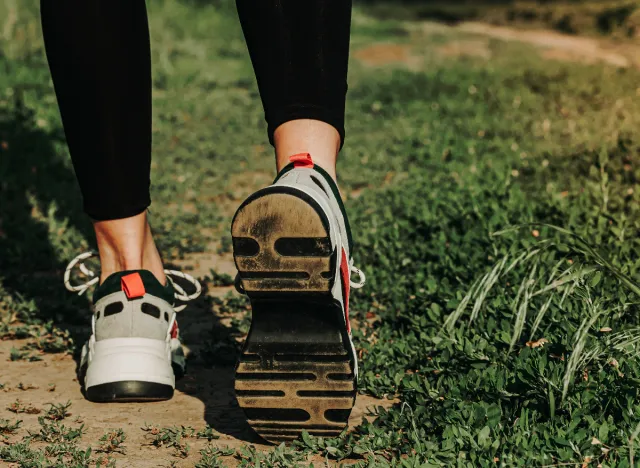
The quicker you walk, the greater the number of calories you will torch!
"Try to gradually increase your rucking speed as you improve over time," suggests Angelino. "If possible, aim [to walk] at a brisk pace. Walking with intention, rather than casually strolling around, will improve calorie burning."
Opt for hills.
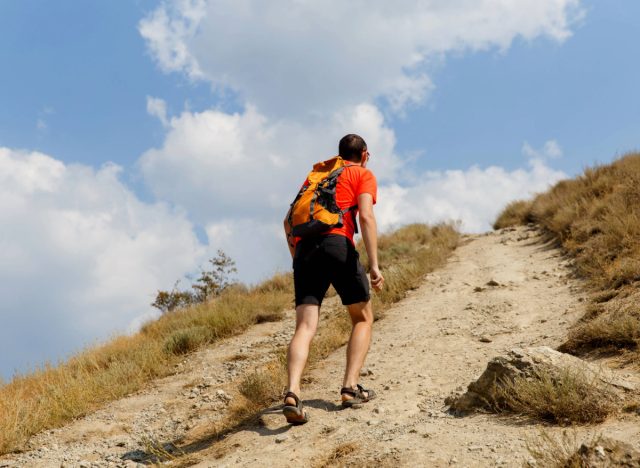
You'll feel the burn in the best way when wearing a rucksack and walking uphill. Angelino recommends choosing a route with a lot of uphill and downhill terrain.
"This will increase the number of calories you burn, and it will be more effective at improving your lower-body muscles," he tells us. "Going up a hill requires you to produce more force to propel your body forward with each step. Going down a hill requires you to produce more force to brake and stop your body from tumbling forward with each step."
Increase the weight.
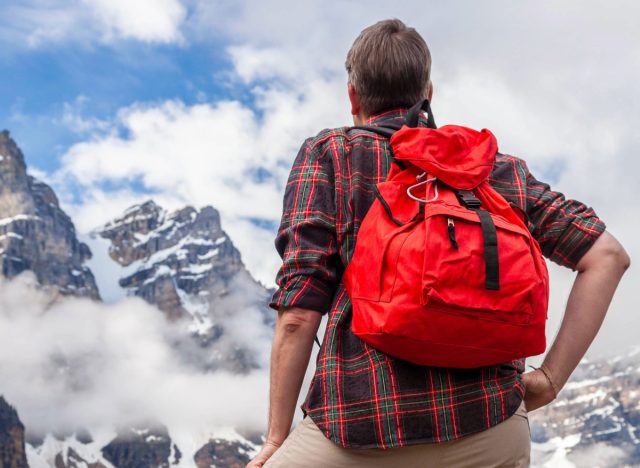
When in doubt, add more weight. The weight you initially chose when you started your rucking routine may no longer challenge your body.
"You can burn more calories while rucking by adding more weight to your rucksack or backpack," Angelino points out. "It can be easy to forget about changing up your rucking weight if you've been doing it for a while. But chances are that you're in better shape than when you started and will be able to handle a bit more weight than you were originally able to."
Ruck for a longer duration.
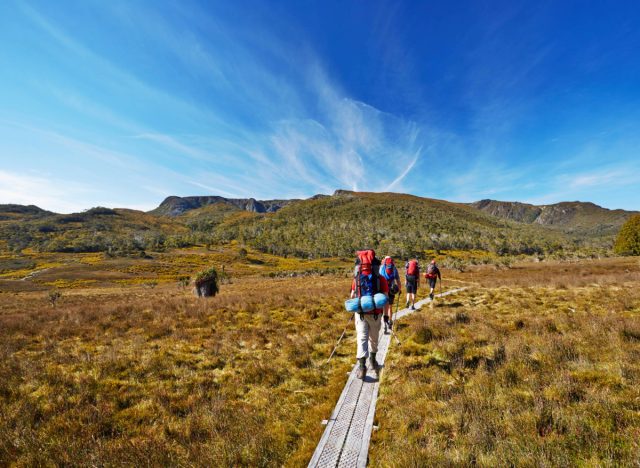
This is a simple tip, yet it can be easy to overlook.
"If you want to burn more calories, just go on longer rucks. You'll spend more time exercising and will therefore burn more calories," Angelino stresses. "If you've been going on 30-minute rucks for a long time, it can be easy to assume rucks are supposed to be that long, but they can be however long you want. If you have an extra five minutes, it's fine to extend it."
Try interval walking.

It can be challenging for some to maintain a faster pace throughout the entire workout. However, you can still incorporate quicker speeds via interval walking.
"[Interval walking helps you achieve] the calorie-burning benefits of walking at a greater speed without needing the endurance to do it without a break," explains Angelino. "Rotate between walking at a moderate maintainable pace and walking very quickly throughout your routine. Plan the durations of each phase based on how much time you need to recover between bouts of faster walking."
Capritto provides a high-intensity interval example. "[Walk] at your maximum speed/effort for one minute, followed by walking for four minutes at a light-to-moderate effort, and repeating for the duration of your session."
Mix in some jogging.
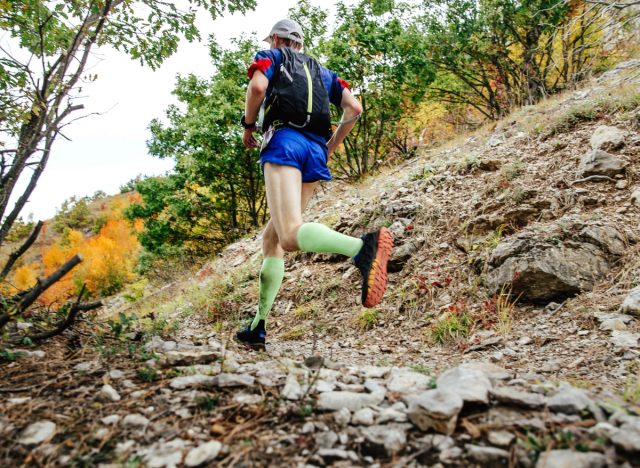
Up the intensity even further by incorporating some jogging into your rucking regimen.
"This will drastically increase the number of calories you burn and will greatly improve the impact your workout has on your cardiovascular system," says Angelino. "You can either do a workout with just jogging, or you can do interval jogging, where you rotate between walking and jogging throughout your workout."
Consider threshold intervals.
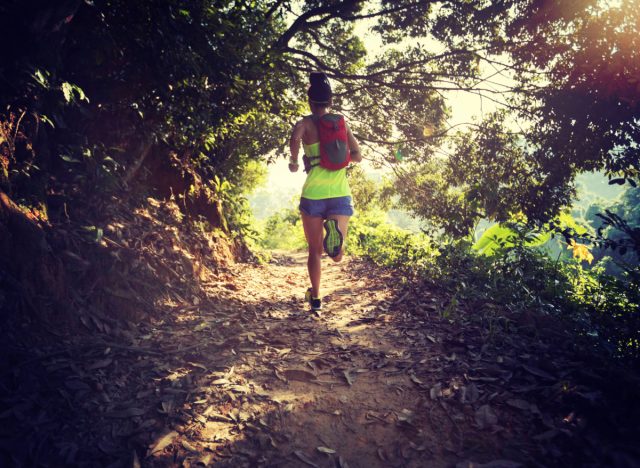
What is a "threshold interval," might you be wondering? Capritto breaks it down.
"Threshold intervals are longer than high-intensity intervals, and they involve working at efforts/paces just beneath your anaerobic threshold," she says. "Popular in running, this concept can work in rucking, too. After determining your threshold pace (approximately the maximum effort you can maintain at a given load for one hour), perform intervals of five to 10 minutes at that pace, followed by low-effort intervals."
Add resistance exercises to your routine.
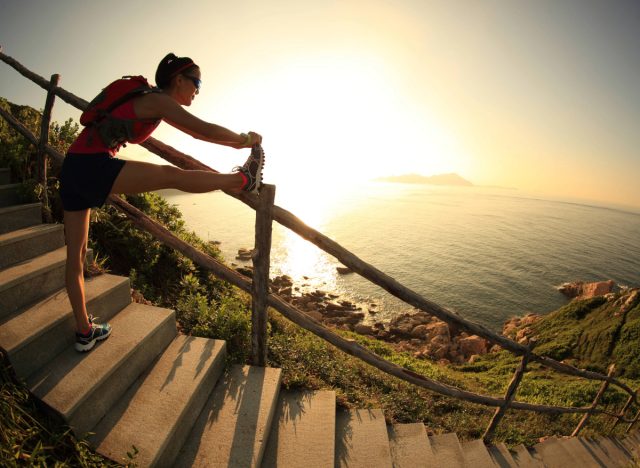
Incorporate resistance exercises into your routine, such as walking lunges and squats.
"[Plan] to stop walking and do quick exercises every several minutes," Angelino suggests. "Squatting is the best fit for this sort of modification. If you stop to do 20 squats through a full range of motion every three to five minutes while wearing a heavy rucksack, you will find that your overall workout will be more cardiovascularly demanding and burn more calories."
Eat before your rucking workout.

Giving your body proper nutrition is essential in a workout regimen. Angelino recommends consuming a nutritious meal before embarking on your ruck.
"Before your workout even starts, eat something nutrient-dense and healthy with a moderate amount of calories," he says. "This will help [give your body] the energy to go all out during your workout. This may sound counterintuitive, but this doesn't mean increasing the number of calories you take in that day. It just means positioning one of your meals before your workout so that you have adequate blood glucose to support your workout. It will help you mentally push a bit harder and physically do so as well."
Stay hydrated.
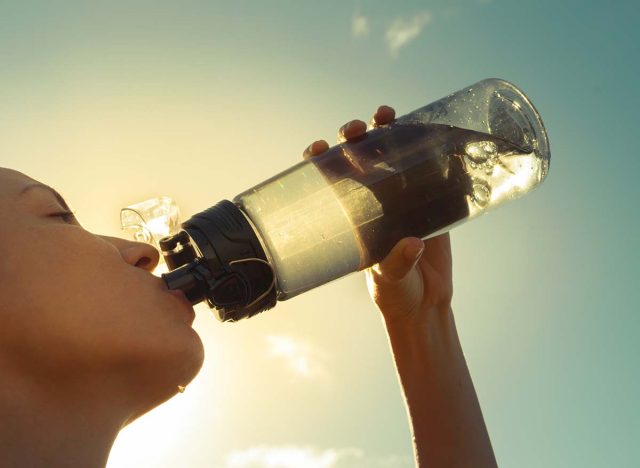
Ensure you bring a water bottle on your ruck, as losing water during a workout can negatively impact your body. Being uncomfortable and thirsty can make you feel less motivated to continue.
"If you're really thirsty, it can be hard to tell yourself to keep going for another five to 10 minutes," says Angelino. "This is why it's helpful to bring water with you. If you're properly hydrated throughout your ruck, you'll have an easier time not only completing the workout as planned but giving yourself permission to extend the workout by another few minutes toward the end."
Pace yourself.
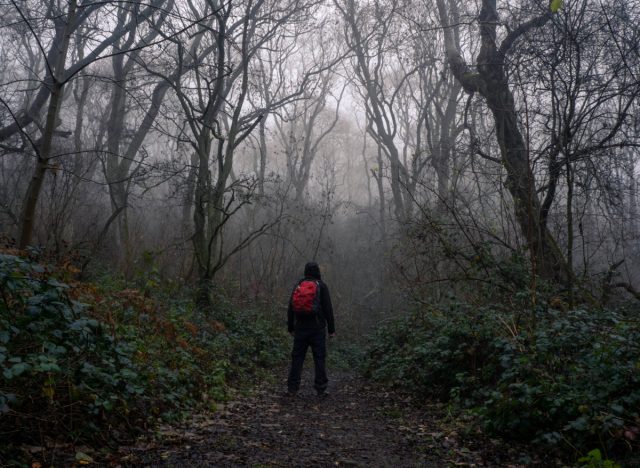
It's never good to take on more than you can handle and risk burning out.
"Focus on doing what is sustainable, and as you become more fit, you'll find that higher [training intensities] become more sustainable," Angelino explains. "You'll burn more calories long-term if you ease into calorie-burning strategies rather than going all in. You'll always burn more calories in a workout that actually happens than in one that never even begins."
Choose trails over pavement.
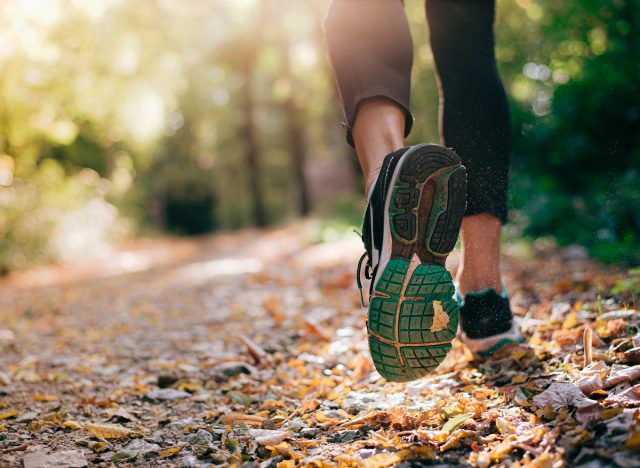
Opt for trails rather than pavement for your rucks.
"If you have access to trails, take your rucking workout off the pavement," Capritto recommends. "Walking on trails exposes you to varied terrain, which includes challenges like inclines and soft ground that minimizes energy return, thereby making each step a greater effort."









